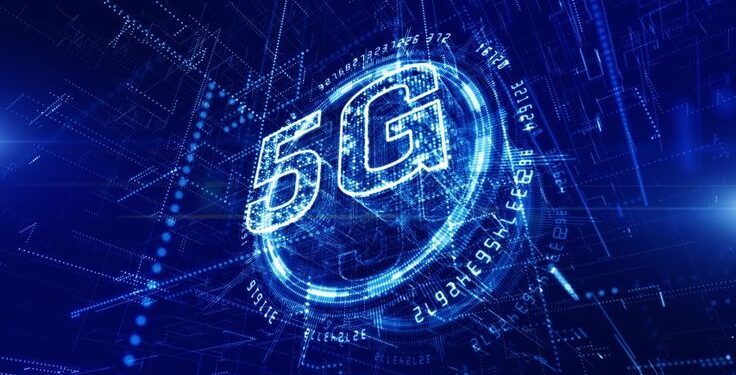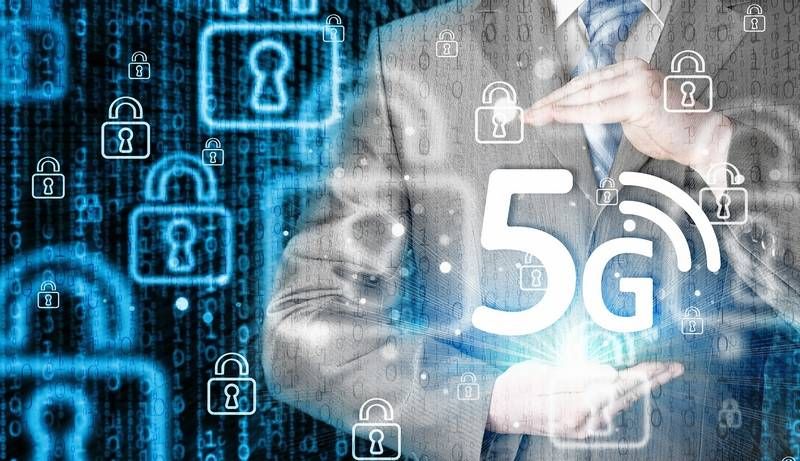In a world where digital transformation is accelerating at a rapid pace, the emergence of 5G connectivity is heralding a new era in global communications. This groundbreaking technology promises faster speeds, lower latency, and a paradigm shift in how devices connect across the globe. In this comprehensive guide, we explore the many dimensions of 5G technology, its applications, challenges, future trends, and the transformative impact it is set to have on industries, businesses, and everyday life. The article is designed to offer in-depth insights for industry professionals, tech enthusiasts, and everyday consumers alike, as we dive into how 5G is reshaping our communication landscape and driving innovation worldwide.
At its core, 5G represents the fifth generation of mobile networks, a significant leap beyond the capabilities of 4G LTE. It utilizes advanced radio technology, increased spectrum bandwidths, and innovative network architectures to deliver data transfer speeds that can exceed gigabit-per-second levels. The reduced latency, which often drops to just a few milliseconds, makes real-time communication and remote control applications not only feasible but incredibly efficient.
Key Attributes of 5G
The following are the fundamental characteristics that define 5G connectivity:
A. High-Speed Data Transfer:
5G networks can provide extremely fast download and upload speeds, making high-definition streaming, real-time gaming, and advanced virtual/augmented reality experiences readily accessible.
B. Low Latency:
Reduced delay in data transmission enhances the performance of time-sensitive applications, such as remote surgery, autonomous vehicles, and industrial automation.
C. Increased Capacity:
5G can support a massive number of connected devices simultaneously. This expansion is critical as the Internet of Things (IoT) continues to grow and more smart devices come online.
D. Enhanced Reliability:
The network’s improved stability and reliability ensure that critical communications, like emergency services and remote monitoring, function seamlessly even under high network load.
E. Energy Efficiency:
The new technology has been designed to optimize power consumption, a crucial feature for both network operators and battery-dependent IoT devices.
How 5G Transforms Global Communications
The advent of 5G connectivity is not just an incremental improvement; it represents a fundamental shift in global communications. The implications are far-reaching, touching virtually every sector of society and business.
A. Enhanced Mobile Experiences
For consumers, 5G means a revolution in mobile experiences. It not only supports faster downloads and smoother streaming of ultra-high-definition content but also powers emerging technologies.
- Real-Time Streaming and Gaming:
With ultra-low latency, live streaming and online gaming now come with minimal lag. This allows for immersive experiences in virtual reality (VR) and augmented reality (AR). - Advanced Communication Applications:
High-speed connectivity supports advanced video conferencing, telepresence, and other tools that are critical in an increasingly remote and mobile workforce. - Seamless Multimedia Sharing:
The ability to share high-resolution images, videos, and other media in real time is set to redefine social media and content sharing, making digital interactions more engaging and instantaneous.
B. Internet of Things (IoT) Expansion
One of the most significant impacts of 5G is its ability to scale IoT deployments effectively.
- Smart Cities:
5G enables large-scale smart city initiatives by connecting millions of devices that manage everything from traffic lights and public safety systems to environmental monitoring sensors and utility grids. - Industrial IoT:
In the industrial sector, enhanced connectivity supports automation, predictive maintenance, and real-time monitoring of manufacturing processes. This improves production efficiency and reduces downtime. - Healthcare Innovations:
Wearable devices and remote patient monitoring systems benefit from the rapid data transmission of 5G, which supports innovations in telemedicine and personalized healthcare.
C. Autonomous Vehicles and Transportation
5G is instrumental in advancing the transportation sector, specifically in the development of autonomous vehicles (AVs).
- Vehicle-to-Vehicle Communication:
Cars equipped with 5G technology can exchange real-time data, enhancing coordination and reducing the likelihood of accidents. - Smart Traffic Management:
Cities can implement advanced traffic management systems that use real-time data to control traffic flow, reduce congestion, and improve safety. - Remote Monitoring and Control:
Fleet management and logistics are transformed by 5G’s ability to monitor vehicle performance, ensuring better route planning, fuel efficiency, and on-time delivery.
D. Transforming Industries with Enhanced Connectivity
5G’s impact extends beyond consumer applications and transportation into various industry sectors.
- Manufacturing:
Smart factories can operate with increased automation, using real-time data from numerous sensors to fine-tune production processes and ensure quality control. - Agriculture:
Precision agriculture benefits from 5G-enabled sensors and drones that monitor crop health, soil conditions, and resource usage, enabling more sustainable and efficient farming practices. - Energy Sector:
Advanced metering and smart grid technology are made more efficient by 5G’s robust connectivity, supporting sustainable energy management and distribution systems. - Entertainment and Media:
The entertainment industry leverages 5G to create immersive experiences such as live concerts in VR and interactive gaming experiences with integrated AR elements.
The Technology Behind 5G
To appreciate the full potential of 5G, it is essential to understand the technological breakthroughs that make it possible. This section breaks down the key components and concepts fundamental to 5G networks.
A. Millimeter Waves and Spectrum Expansion
One of the hallmarks of 5G is its use of millimeter waves (mmWaves), which occupy higher frequencies than previous generations of mobile networks. These waves allow for much higher data rates and greater bandwidth but come with challenges such as reduced range and interference from physical obstacles.
- Spectrum Utilization:
Efficient use of high-frequency bands enables denser data transmission, catering to the exponential growth of connected devices. - Small Cell Technology:
To overcome the range limitations of mmWaves, operators deploy small cell networks. These are low-power nodes that provide targeted coverage, ensuring robust connectivity in dense urban areas and indoor environments.
B. Massive MIMO (Multiple Input, Multiple Output)
Massive MIMO is another key technology in the 5G ecosystem. By utilizing a large number of antennas at the base station, massive MIMO allows simultaneous data transmission to multiple devices.
- Increased Throughput:
The parallel streams of data that massive MIMO can handle significantly boost throughput and overall network capacity. - Enhanced Signal Quality:
Multiple antennas help improve the signal-to-noise ratio, ensuring more reliable and clearer connections even in crowded areas.
C. Network Slicing
Network slicing is a revolutionary concept that allows operators to create multiple virtual networks within a single physical 5G network. Each slice can be tailored to meet the specific needs of different applications or industries.
- Customizable Networks:
Businesses can receive dedicated resources for critical applications, ensuring reliability and performance without interference from other traffic. - Efficient Resource Allocation:
Network slicing ensures that data is managed efficiently, reducing congestion and optimizing network performance for various applications, from emergency services to industrial controls.
D. Edge Computing Integration
Edge computing brings data processing closer to the source of data generation. By integrating edge computing with 5G, latency is further reduced, and the responsiveness of applications is enhanced.
- Real-Time Processing:
Applications that require immediate responses, such as autonomous driving or remote surgery, benefit immensely from the proximity of edge servers. - Reduced Bandwidth Usage:
Processing data on the edge minimizes the need to transmit vast amounts of data to a centralized cloud, optimizing both speed and network efficiency.
Challenges in 5G Deployment
While the promise of 5G connectivity is immense, the path to its global implementation is not without hurdles. Understanding these challenges is crucial for stakeholders as they work towards a smoother transition.
A. Infrastructure Costs
Deploying 5G networks requires significant investment. The infrastructure needed—such as small cells, fiber optic cables, and new antenna systems—demands high capital expenditure.
- Investment in Small Cells:
Frequent installation of small cells, especially in urban areas, is essential to manage the high-frequency limitations of 5G. This requires substantial financial and logistical planning. - Upgrading Existing Networks:
Integrating 5G with legacy 4G systems involves considerable upgrades to existing infrastructure, impacting both cost and deployment timelines.
B. Regulatory and Spectrum Issues
The allocation of new frequency bands for 5G is subject to regulatory approval and can vary widely between regions.
- Harmonization of Spectrum Policies:
International and national regulators must collaborate to ensure that spectrum allocations are standardized, enabling seamless global connectivity. - Compliance with Environmental and Health Standards:
High-frequency signals and dense infrastructure raise concerns about environmental impact and public health, necessitating rigorous testing and regulation.
C. Security and Privacy Concerns
As with any transformative technology, 5G introduces new security challenges. The increased number of connected devices and network slicing can potentially expose vulnerabilities.
- Robust Cybersecurity Measures:
Comprehensive security protocols must be developed to protect data transmitted over 5G networks from cyberattacks and breaches. - Data Privacy Regulations:
As personal and sensitive data traverse these networks, ensuring compliance with data protection laws—such as GDPR in Europe or CCPA in California—is vital to maintain user trust.
D. Global Disparities in Deployment
The rollout of 5G is not uniform across the globe. Developed regions may witness rapid adoption, whereas rural or economically challenged areas might lag behind, creating a digital divide.
- Investment in Rural Connectivity:
Public and private sector collaboration is necessary to extend the benefits of 5G to underserved regions, ensuring equitable access to high-speed connectivity. - Cross-Border Challenges:
International cooperation is required to address differences in regulatory environments, infrastructure capabilities, and economic incentives for 5G deployment.
Future Prospects of 5G Connectivity
The potential of 5G extends far beyond faster mobile internet. As networks mature and integrate with other emerging technologies, the impact will be felt across diverse domains.
A. Enabling Next-Generation Applications
5G is positioned to act as the backbone for next-generation applications that were once considered futuristic.
- Smart Homes and Buildings:
Integrated systems controlled by AI, responsive to environmental changes, and capable of managing energy consumption efficiently will transform the way we live and work. - Remote Healthcare and Telemedicine:
With real-time data transmission and minimal latency, remote surgery, real-time monitoring, and AI-assisted diagnostics will redefine medical care, especially in remote and underserved areas. - Immersive AR/VR Experiences:
The increased data rates and reduced latency open the door to more realistic virtual reality and augmented reality applications in education, training, entertainment, and design.
B. Economic and Social Impact
Beyond technology, the rollout of 5G is set to have profound economic and social impacts.
- Job Creation and New Industries:
The expansion of 5G networks will spawn new industries and job opportunities, from network maintenance and cybersecurity to app development and digital services. - Enhanced Global Connectivity:
With more reliable and ubiquitous internet access, businesses can operate more efficiently, and individuals can access educational and professional opportunities regardless of geographic location. - Digital Inclusion:
Bridging the digital divide by extending 5G connectivity to remote and underserved regions can spur social innovation, improve access to government services, and empower communities with better educational resources.
C. 6G and the Road Ahead
While 5G is currently transforming communications, research is already underway for the next generation of wireless technology—6G. Envisioned to offer even faster speeds, ultra-low latency, and enhanced integration with artificial intelligence and quantum computing, 6G will likely build upon the advancements of 5G. The continued evolution of mobile networks ensures that global communications will keep pace with technological and societal demands.
Implementing 5G in Business Strategies
Businesses across sectors are increasingly recognizing the potential of 5G to drive growth and innovation. Companies that integrate 5G into their strategic plans stand to benefit significantly.
A. Strategic Planning for 5G Adoption
Before investing in 5G technologies, organizations must perform a thorough analysis of their current infrastructure, market position, and long-term objectives.
- Assessing Business Needs:
Evaluate how 5G can address operational bottlenecks, improve customer interactions, and enable new services. This assessment is crucial for identifying specific applications that offer the best return on investment. - Developing a Roadmap:
A comprehensive roadmap should outline the phased implementation of 5G solutions, covering aspects such as technology selection, infrastructure upgrades, and workforce training. - Budgeting and Resource Allocation:
Allocating sufficient funds and resources to support the transition to 5G ensures that implementation is smooth and aligns with overall business growth strategies.
B. Industry-Specific Applications of 5G
Different sectors are leveraging 5G in ways tailored to their unique challenges and opportunities.
- Retail:
Enhanced mobile connectivity allows for in-store digital experiences, AR-assisted product displays, and real-time inventory management. Retailers can offer personalized shopping experiences that drive customer engagement and loyalty. - Finance:
Financial institutions use 5G to streamline digital transactions, support mobile banking applications, and enhance security measures through real-time fraud detection systems. - Entertainment:
Media companies benefit from higher streaming quality, interactive content, and virtual live events that reach global audiences without latency issues. - Manufacturing:
In manufacturing, 5G supports smart factories through automated processes, real-time monitoring, and improved supply chain logistics. This integration not only increases efficiency but also enables predictive maintenance and quality control.
C. Training and Workforce Development
Adopting 5G requires not just technology but also a skilled workforce that understands its capabilities. Investing in training programs and hiring talent specialized in 5G technologies can accelerate the transition and maximize the benefits of this cutting-edge network.
- Technical Training:
Employees need to be acquainted with new hardware, software, and network protocols introduced with 5G technology. - Strategic Adoption Workshops:
Conducting workshops and seminars to align teams on the strategic benefits and use cases of 5G can foster collaboration and innovation within the organization.
5G and Global Economic Transformation
The wider economic implications of 5G are far-reaching. By acting as a catalyst for innovation, 5G supports the rise of digital economies and paves the way for global competitiveness.
A. Boosting Global Trade and Communication
The increased data speeds and connectivity mean that international businesses can operate more efficiently, reduce costs, and enhance communication across borders.
- Seamless Collaboration:
Teams across continents can collaborate in real time, share large datasets effortlessly, and perform complex tasks remotely without degradation in performance. - Market Expansion:
As 5G connectivity becomes more widespread, markets that were once hampered by infrastructure limitations can now participate actively in the global economy.
B. Innovation Ecosystems
Innovative startups and established companies alike are leveraging 5G to develop new products and services.
- Incubators and Innovation Hubs:
Regions that invest in 5G infrastructure often see a rise in technology incubators and innovation hubs, driving local economic growth and fostering a culture of entrepreneurship. - Cross-Sector Collaboration:
The convergence of technologies such as AI, IoT, and blockchain with 5G connectivity creates opportunities for cross-sector collaboration. Such partnerships often result in novel solutions addressing complex challenges across industries.
Conclusion
The advent of 5G connectivity is reshaping the landscape of global communications in profound ways. With ultra-fast speeds, lower latency, and the capacity to connect billions of devices, 5G is transforming mobile experiences, fueling the expansion of the Internet of Things, revolutionizing industries, and opening new avenues for economic growth. As network operators, businesses, and governments invest in and adopt this technology, the future of communication appears not only faster and more reliable but also highly transformative on both a local and global scale.
The journey toward a fully connected, AI-enhanced, and data-driven ecosystem is already underway. Organizations that embrace 5G will unlock new opportunities in efficiency, innovation, and customer engagement. While challenges such as infrastructure investment, regulatory hurdles, and security concerns persist, the long-term benefits of 5G make it a cornerstone of future technological development. Moreover, as subsequent generations of connectivity like 6G are explored, the evolution of global communication networks is set to continue, driving a digital revolution that will reshape every aspect of society.
In summary, 5G connectivity is more than just an upgrade to current mobile networks—it is the foundation upon which the future of communications, digital economies, and innovative industries will be built. By investing in 5G, preparing strategic roadmaps, and fostering a skilled workforce, businesses and governments alike can ensure that they not only keep pace with technological advancements but also lead the charge towards a more connected and efficient global community.












